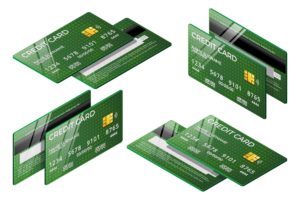A Guide On The Line Of Credit- What Are Its Pros And Cons?
This guide will help you understand what a Line of Credit in Canada is and what its pros and cons are.

A monetary crisis may arrive in anyone’s life at any point. Borrowing money during a financial crisis can help you stay afloat. Financial institutions offer ready credit line loans to investors who have an excellent repayment track. The line of credit is an instant loan facility for investors having a good relationship with the financial institution or bank. If you want to know more about the line of credit, keep reading.
Introduction to the line of credit
A line of credit is a flexible loan offered by a bank. Borrowers can access it right away and do not have to go through a lot of paperwork in most cases.
These loans have a rigid nature with many terms and conditions. However, the lender approves a line of credit facility based on the creditworthiness of a borrower. The borrower pays only the interest on that amount and pays the principal amount anytime during the credit.
Types of line of credit
1. Home equity line of credit – (HELOC)
The HELOC line of credit is one of the most used loans for purchasing a housing property. It permits a borrower to take out and use funds during a pre-set time frame.
2. Personal line of credit
A personal line of credit is a loan intended to meet the financial need of individuals at a personal level. A personal line of credit allows an individual to withdraw funds until it does not surpass the limit. A credit card offers the same service, but a personal line of credit option has lower interest rates than a credit card system.
3. Business line of credit
As the name suggests, the business line of credit extends financial loans to business owners for business operations at a specific interest rate.


Pros and cons of line of credit:
The line of credit system has its own set of pros and cons. An investor should know about both and then decide to invest in the line of credit.
Pros of line of credit
1. Flexibility
The line of credit is a flexible loan easily accessible as needed.
2. Low rates of interest
The interest rate is low in the line of credit compared to the credit card or any other loan. The borrower maintains a long-term borrowing relationship with the bank or financial institution and stands in good stead. Banks are more than willing to lend to investors with good creditworthiness, credit bureau scores, and a good payment track record.
3. A temporary cash resource
During any cash crunch or money shortage situation, the line of credit is a significant source to gain quick cash for any activity.
Cons of line of credit
1. A good credit score is required
One drawback of a line of credit system is an excellent credit score is required to qualify for the loan. Lenders approve only good credit score holders to offer the loans, affecting investors with a low credit score.
2. Not suitable for long term cash needs
A line of credit may only suit short-term cash needs and not cater to long-term requirements. It discourages many investors from investing in it.
To conclude, the line of credit system is one of the most flexible types of loan available for borrowers, having its pros and cons. An investor must consider both before investing in it.



